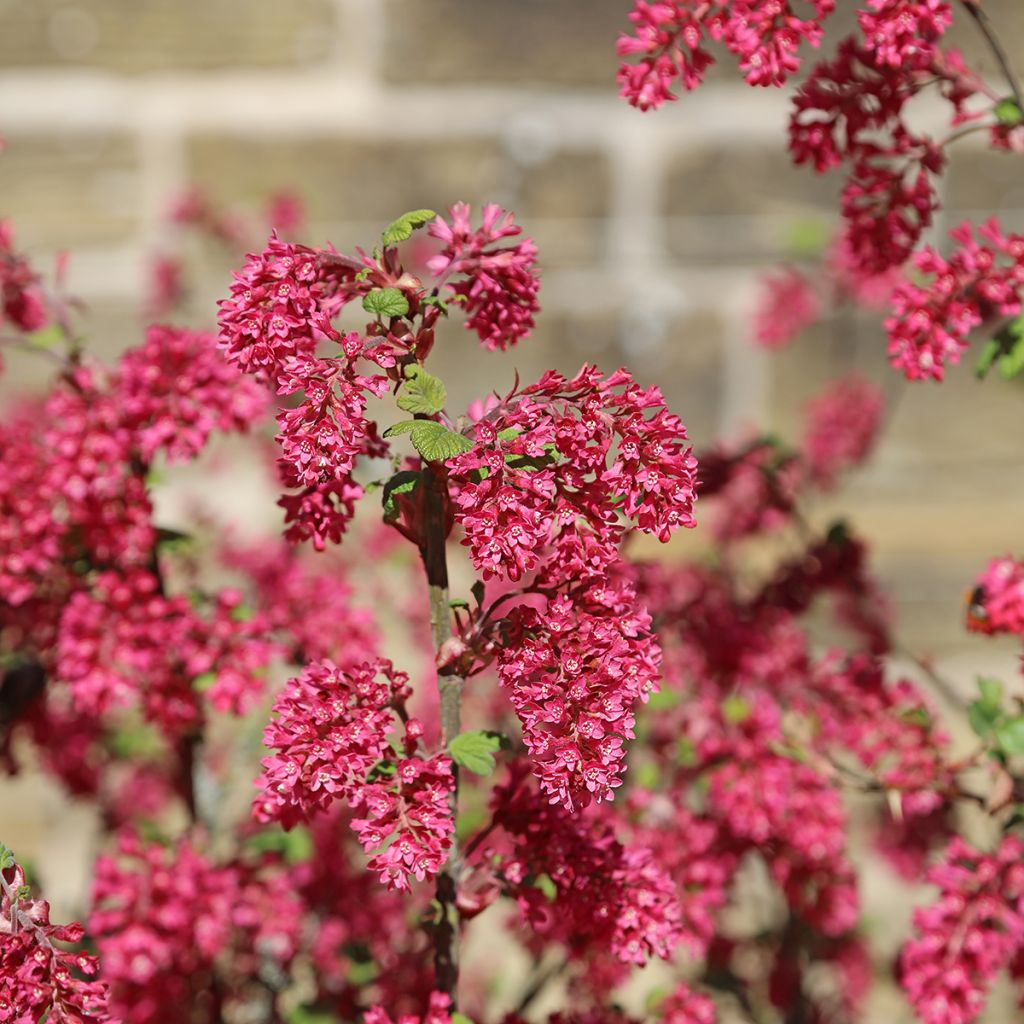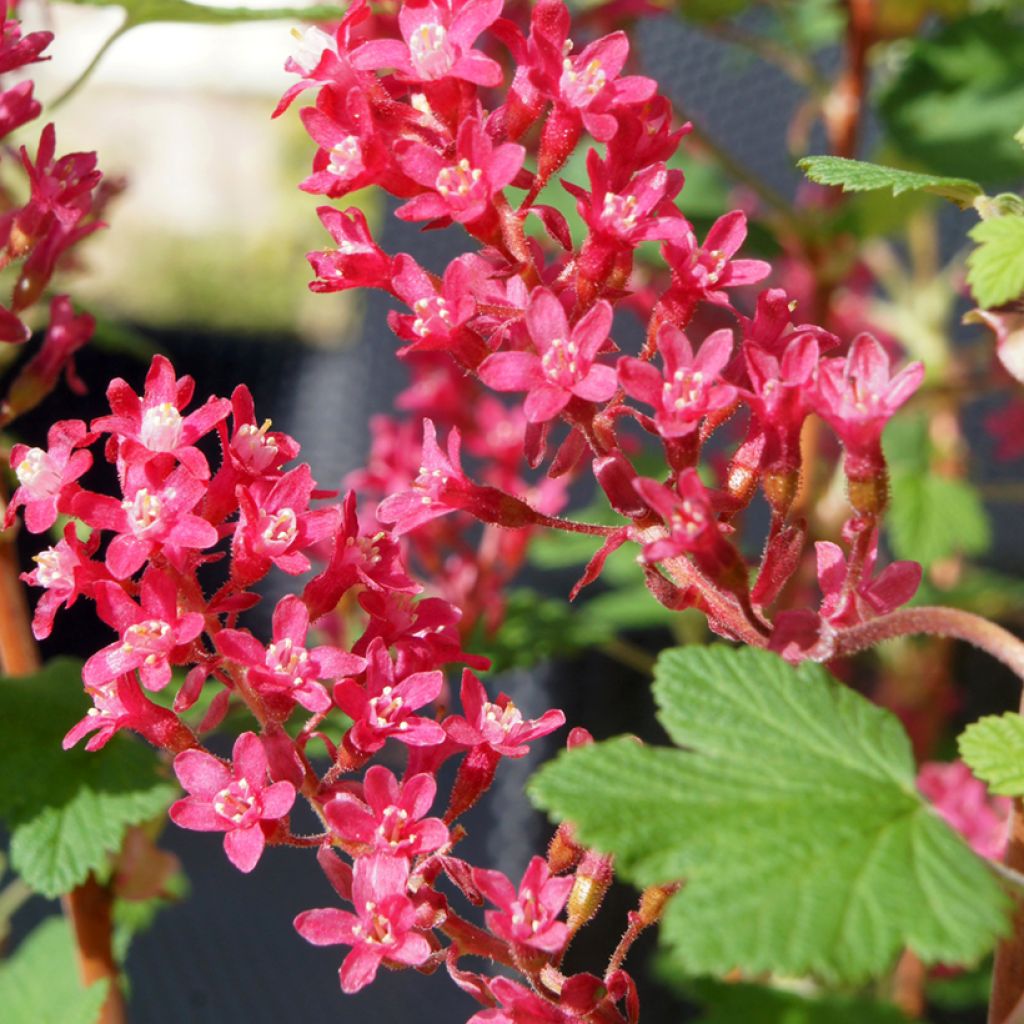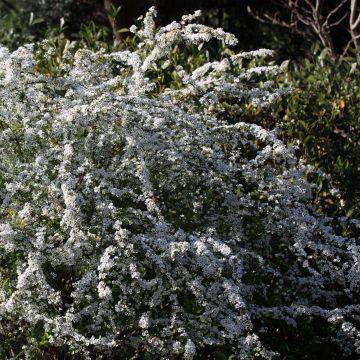

Ribes sanguineum Amore


Ribes sanguineum Amore
Ribes sanguineum Amore
Ribes sanguineum 'Annys2003' Amore
Flowering Currant, Red-flowering Currant
Special offer!
Receive a €20 voucher for any order over €90 (excluding delivery costs, credit notes, and plastic-free options)!
1- Add your favorite plants to your cart.
2- Once you have reached €90, confirm your order (you can even choose the delivery date!).
3- As soon as your order is shipped, you will receive an email containing your voucher code, valid for 3 months (90 days).
Your voucher is unique and can only be used once, for any order with a minimum value of €20, excluding delivery costs.
Can be combined with other current offers, non-divisible and non-refundable.
Home or relay delivery (depending on size and destination)
Schedule delivery date,
and select date in basket
This plant carries a 24 months recovery warranty
More information
We guarantee the quality of our plants for a full growing cycle, and will replace at our expense any plant that fails to recover under normal climatic and planting conditions.
Would this plant suit my garden?
Set up your Plantfit profile →
Description
The Amore Flowering Currant is a particularly floriferous selection, with deep red flowers that emit a sweet vanilla fragrance. In spring, they bloom in small clusters along the branches. It is a very hardy shrub, with deciduous light green foliage that has a subtle blackcurrant aroma, which is why it is also known as "False Blackcurrant". Plant it in a small flowering hedge, mixed with other shrubs that bloom at different times. Its compact size also makes it suitable for container gardening.
Ribes sanguineum Amore 'Annys2003', bred by van Nijnatten in the Netherlands in 2014, is a cultivar of the flowering currant. It belongs to the Grossulariaceae family. This particularly robust shrub species originates from the western United States. In nature, it is found mainly on rocky and wooded slopes from southern California to the northwest of the United States. Amore, much more compact than the species, reaches about 1.50 m in height and spreads over 1 m, with a moderately fast growth rate. It has an upright, bushy, compact growth habit. In April-May, after the leaves have emerged, pendulous clusters measuring about 7 cm long appear along the branches. They consist of small flowers that are red with a touch of pink, highlighted by a white eye. This fragrant flowering follows that of the Forsythia. The light green, 5 to 10 cm long leaves, have five shallow irregularly toothed lobes. They release a delightful blackcurrant scent when crushed. The branches of this deciduous shrub are bare in winter.
Ribes sanguineum Amore will find a place in all gardens, in a mixed hedge, shrub borders, or even as a standalone specimen. It is equally charming when grown in a container. In addition to its classic but charming association with Forsythias, you can also plant it in a spring scene with Japanese quince, Chinese almond tree Prunus triloba 'Multiplex', or a white double-flowered plum tree Prunus glandulosa Alba Plena. Planted in groups of three or four, mixed together, Flowering Currants create an extraordinary effect, especially at the back of perennial borders. Finally, to fully enjoy its flowers and fragrance, you can cut flowering branches for your bouquets.
Report an error about the product description
Ribes sanguineum Amore in pictures


Plant habit
Flowering
Foliage
Botanical data
Ribes
sanguineum
'Annys2003' Amore
Grossulariaceae
Flowering Currant, Red-flowering Currant
Cultivar or hybrid
Planting and care
Plant the Flowering Currant Bush Amore in ordinary, deep, rich, moist soil, without excessive limestone. This bush will thrive in partial shade or in the sun, but in a non-scorching exposure. Pruning is not essential, except to remove dead wood or correct a slightly sparse habit. The branches should be pruned by one-third of their size after flowering. When planting, you can bury part of the collar to promote good rooting.
Maintenance pruning: if you simply want to maintain the shape of the bush, just remove weak or overly arched branches and dead wood. Rejuvenation pruning: for subjects that have become too bulky or have lost their bushy shape (thinning at the base, sparse branches), it is advisable to prune the branches to 50 cm from the ground. This can be done all at once (rigorous pruning, for older subjects) or over 3 years (pruning one-third of the branches each year, ensuring a balanced appearance for the bush). The bush will then form new shoots.
Planting period
Intended location
Care
This item has not been reviewed yet - be the first to leave a review about it.
Similar products
Haven't found what you were looking for?
Hardiness is the lowest winter temperature a plant can endure without suffering serious damage or even dying. However, hardiness is affected by location (a sheltered area, such as a patio), protection (winter cover) and soil type (hardiness is improved by well-drained soil).

Photo Sharing Terms & Conditions
In order to encourage gardeners to interact and share their experiences, Promesse de fleurs offers various media enabling content to be uploaded onto its Site - in particular via the ‘Photo sharing’ module.
The User agrees to refrain from:
- Posting any content that is illegal, prejudicial, insulting, racist, inciteful to hatred, revisionist, contrary to public decency, that infringes on privacy or on the privacy rights of third parties, in particular the publicity rights of persons and goods, intellectual property rights, or the right to privacy.
- Submitting content on behalf of a third party;
- Impersonate the identity of a third party and/or publish any personal information about a third party;
In general, the User undertakes to refrain from any unethical behaviour.
All Content (in particular text, comments, files, images, photos, videos, creative works, etc.), which may be subject to property or intellectual property rights, image or other private rights, shall remain the property of the User, subject to the limited rights granted by the terms of the licence granted by Promesse de fleurs as stated below. Users are at liberty to publish or not to publish such Content on the Site, notably via the ‘Photo Sharing’ facility, and accept that this Content shall be made public and freely accessible, notably on the Internet.
Users further acknowledge, undertake to have ,and guarantee that they hold all necessary rights and permissions to publish such material on the Site, in particular with regard to the legislation in force pertaining to any privacy, property, intellectual property, image, or contractual rights, or rights of any other nature. By publishing such Content on the Site, Users acknowledge accepting full liability as publishers of the Content within the meaning of the law, and grant Promesse de fleurs, free of charge, an inclusive, worldwide licence for the said Content for the entire duration of its publication, including all reproduction, representation, up/downloading, displaying, performing, transmission, and storage rights.
Users also grant permission for their name to be linked to the Content and accept that this link may not always be made available.
By engaging in posting material, Users consent to their Content becoming automatically accessible on the Internet, in particular on other sites and/or blogs and/or web pages of the Promesse de fleurs site, including in particular social pages and the Promesse de fleurs catalogue.
Users may secure the removal of entrusted content free of charge by issuing a simple request via our contact form.
The flowering period indicated on our website applies to countries and regions located in USDA zone 8 (France, the United Kingdom, Ireland, the Netherlands, etc.)
It will vary according to where you live:
- In zones 9 to 10 (Italy, Spain, Greece, etc.), flowering will occur about 2 to 4 weeks earlier.
- In zones 6 to 7 (Germany, Poland, Slovenia, and lower mountainous regions), flowering will be delayed by 2 to 3 weeks.
- In zone 5 (Central Europe, Scandinavia), blooming will be delayed by 3 to 5 weeks.
In temperate climates, pruning of spring-flowering shrubs (forsythia, spireas, etc.) should be done just after flowering.
Pruning of summer-flowering shrubs (Indian Lilac, Perovskia, etc.) can be done in winter or spring.
In cold regions as well as with frost-sensitive plants, avoid pruning too early when severe frosts may still occur.
The planting period indicated on our website applies to countries and regions located in USDA zone 8 (France, United Kingdom, Ireland, Netherlands).
It will vary according to where you live:
- In Mediterranean zones (Marseille, Madrid, Milan, etc.), autumn and winter are the best planting periods.
- In continental zones (Strasbourg, Munich, Vienna, etc.), delay planting by 2 to 3 weeks in spring and bring it forward by 2 to 4 weeks in autumn.
- In mountainous regions (the Alps, Pyrenees, Carpathians, etc.), it is best to plant in late spring (May-June) or late summer (August-September).
The harvesting period indicated on our website applies to countries and regions in USDA zone 8 (France, England, Ireland, the Netherlands).
In colder areas (Scandinavia, Poland, Austria...) fruit and vegetable harvests are likely to be delayed by 3-4 weeks.
In warmer areas (Italy, Spain, Greece, etc.), harvesting will probably take place earlier, depending on weather conditions.
The sowing periods indicated on our website apply to countries and regions within USDA Zone 8 (France, UK, Ireland, Netherlands).
In colder areas (Scandinavia, Poland, Austria...), delay any outdoor sowing by 3-4 weeks, or sow under glass.
In warmer climes (Italy, Spain, Greece, etc.), bring outdoor sowing forward by a few weeks.








































